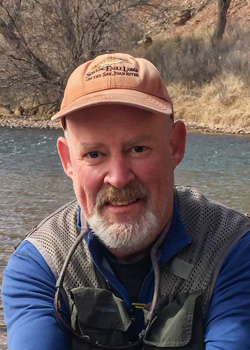Read that sentence out loud and close your eyes. What images come to mind? The fat guy in the red suit? Candy canes and biscochitos, a steaming bowl of posole with a fried egg on top? Maybe it’s your living room — all the beautifully wrapped gifts spread around a sparkling tree.
For me, it’s just the tree, dark green, a perfect triangle. I can almost make my nose start running at the thought of waddling into the forest to harvest it. There are sandwiches in the backpack, maybe a thermos of hot tea or a whiskey flask. It’s one of those late afternoon scenes when the sun has dipped behind a hill and the snow is more blue than white.
We all know what being in that forest feels like because we live in a country that gave us so much public land. To be more precise, we know what it’s like because we live in northern New Mexico where the forest is everywhere and everything. The forest gives us meat, relaxation, and exercise. It heats many of our homes and provides many of us with jobs.
A life near the forest can seem like an easy one, but a surprising amount of work goes into making that seem true. There are thousands of miles of roads and trails to maintain, streams to restore and keep clean, cattle and wildlife to feed, campgrounds to oversee, fires to manage and extinguish.
For better or worse — the heartburn that northern New Mexicans feel at the usurping of ancestral lands into federal management still looms as large as the mountains — this work falls heavily upon the U.S. Forest Service. The Forest Service is responsible for what we expect the forests to give us, from trout-filled streams to Christmas trees.
We usually forget this until we, the “public,” want something, which can be particularly problematic when that something is not what the other “public” wants. For every person who wants to cut a tree down, there’s another person or four that want it left alone. Forest users bicker over cattle, ATVs, and ski areas, and when things get ugly, we expect the Forest Service to smile in the middle of it all as we bully it (I should say “them,” since the agency is composed of actual people) from all sides.
At the end of a particularly challenging 2022, the Forest Service finds itself in the middle again. The year began dry, then windy. As often happens with human endeavors, a tragic mistake was made. I repeat, it was a mistake, one that not only impacted impacted many people, as well as a huge swath of treasured land but sucked up resources that were needed on other landscapes. There were other fires to tend to, angry cattlemen and environmentalists. To make matters worse, the monsoon storms took their sweet time.
To say that anyone, especially anyone working for the Forest Service, didn’t experience acute pain at the tragedy of 2022 would be wrong and extremely unfair.
In this season of giving and counting blessings, I hope we will create generous space for those we charge with caring for our playgrounds. Let’s not speak of the Forest Service as though it’s some enormous robot, as though its employees don’t live among us as friends or the parents of our children’s friends, as though we don’t bump into them in the grocery store aisles, or wave at them on the ski slopes.
Let’s acknowledge what we take for granted. It’s plausible that many a Forest Service worker dreamed of an outdoor career as a child, one that involved science, public service, or both. Maybe it was just passion that spurred them onward. I know there are teachers and police officers who grow up with similar ideals. Whatever the case may be, these are the kinds of people who keep showing up, who continue to put themselves in abuse’s way, for what reason I cannot say.
We need more of these people, not fewer.



